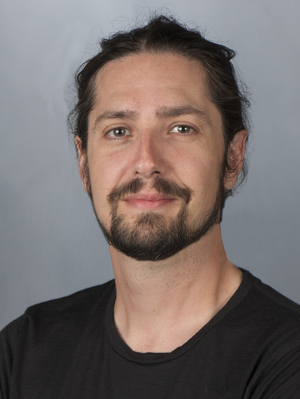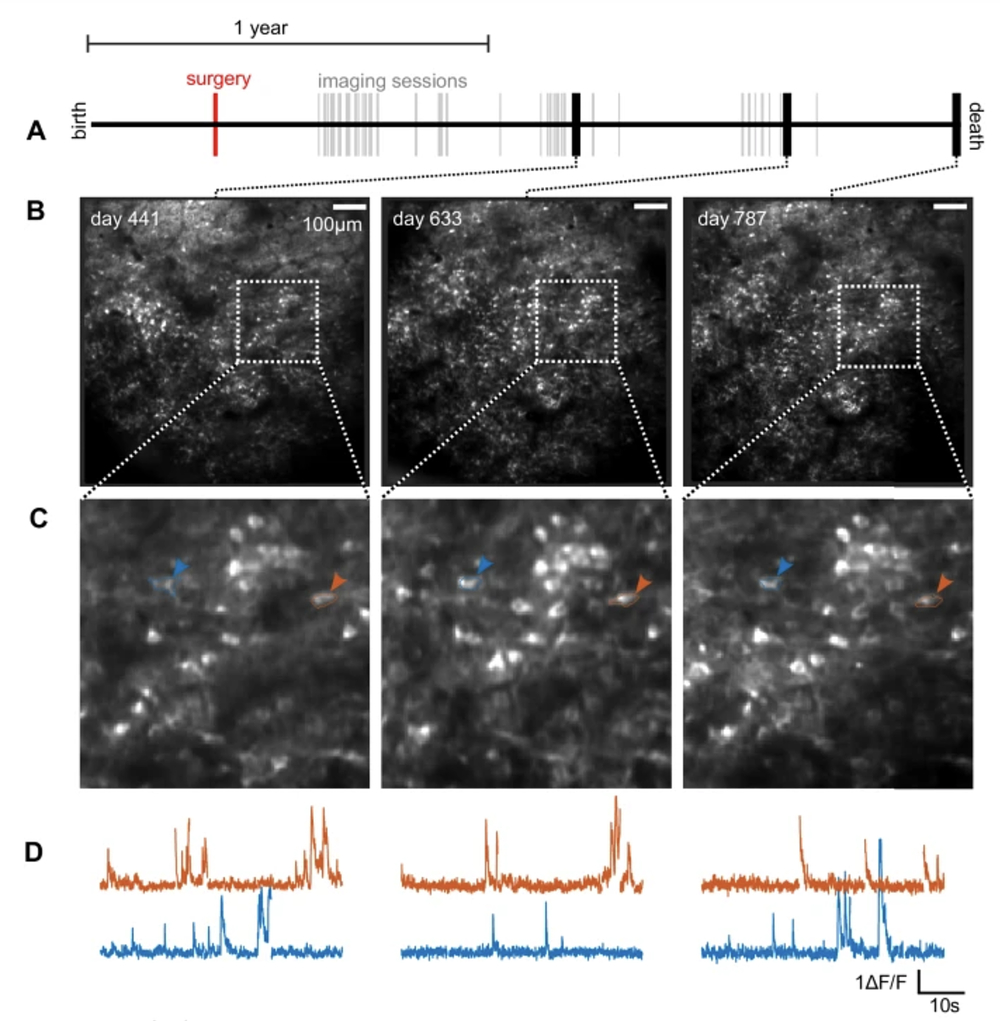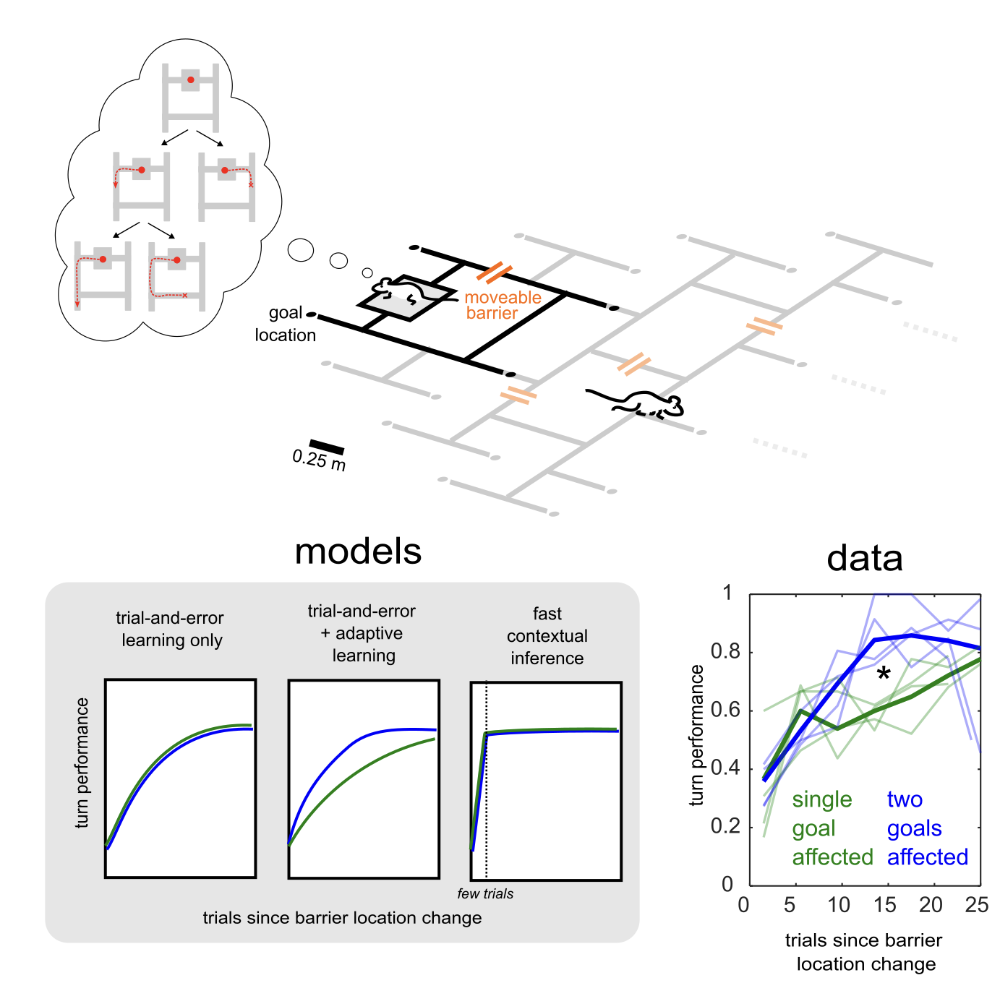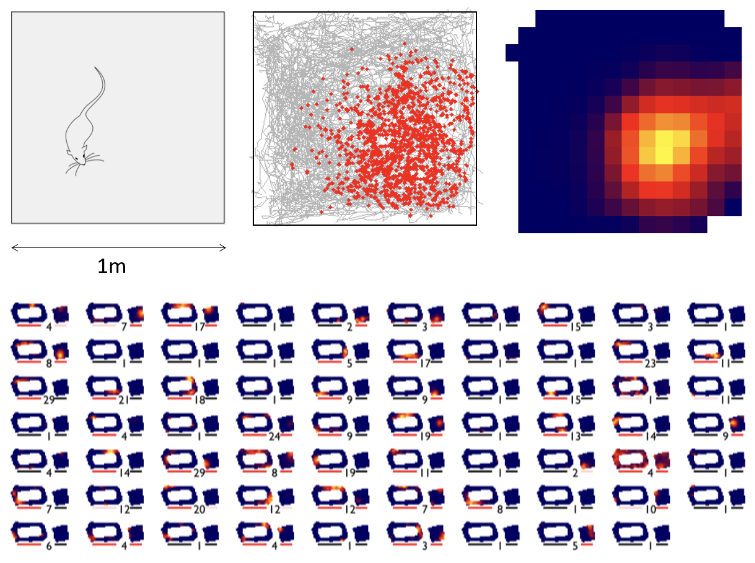
Dylan Rich, PhD
Assistant Professor
Physiology and Pharmacology
Hippocampal function in memory and cognition during lifetime learning
Memories can last a lifetime, but the neural mechanisms which underlie this remarkable persistence are not well understood. The hippocampus is essential for long-term memory in humans and is one of the first brain structures affected in Alzheimer’s disease. The Rich lab studies the neurodynamics of the hippocampus in rodents. We record neurons in the brain throughout the lifespan as animals perform challenging tasks designed to delineate defined cognitive processes such as planning and inference. We use various experimental and computational approaches to understand how memories are used to guide decisions in the healthy and aging brain.
Lifespan Neural Imaging
We use calcium imaging techniques to record from the same neurons in the hippocampus across the whole adult lifespan. This gives us an unprecedented opportunity to ask questions such as how are memories encoded? How are they stored? And how are they used to guide behavior?

Figure 1. Calcium imaging of the hippocampus across the lifespan A Lifeline of one rat; line shows the extent of the animal’s total life, 25 months. Awake-behaving imaging sessions are shown as ticks. Bold ticks are example sessions illustrated below. B Average fluorescence fields of view for three example sessions. C Expanded views. Two corresponding cells are marked. D Calcium fluorescence traces for the two cells indicated above.
Learning and Navigation
Learning in the real-world is complex: it requires deciding between many sequential options over long time scales. How does the brain achieve these impressive learning feats? In the lab, we aim to design tasks for animals that challenge their learning and navigational abilities. We use computation frameworks such as reinforcement learning and neural networks to design and interpret experiments to uncover and understand the algorithms of learning.

Figure 2. We design complex environments for animals to explore and navigate; we use olfactory stimuli as a tool for studying memory. Computational models of behavior delineate different patterns of learning for the animal, which can then be compared with behavioral data.
Large-scale Electrophysiology
Using techniques such as Neuropixels and wireless data recording, we capture millisecond-precision neural activity from large numbers of neurons in freely behaving animals. This approach lets us see the fast dynamics of hippocampal circuits during navigation, decision-making, and memory retrieval.

Figure 3. Place cells are neurons in the hippocampus that fire in certain parts of an environment. Capturing how these cells respond under different conditions is a crucial part to understanding the memory functions of the hippocampus.
Service Functions
Reviewer for various scientific journals, funding organizations and conferences
- Rich, P. D., Liaw, H.-P., and Lee, A. K. (2014). Large environments reveal the statistical structure governing hippocampal representations. Science 345, 814–817.
- Jun, J. J., Steinmetz, N. A., Siegle, J. H., Denman, D. J., Bauza, M., Barbarits, B., Lee, A. K., Anastassiou, C. A., Andrei, A., Aydın, Ç., Barbic, M., Blanche, T. J., Bonin, V., Couto, J., Dutta, B., Gratiy, S. L., Gutnisky, D. A., Häusser, M., Karsh, B., Ledochowitsch, P., Lopez, C. M., Mitelut, C., Musa, S., Okun, M., Pachitariu, M., Putzeys, J., Rich, P. D., Rossant, C., Sun, W., Svoboda, K., Carandini, M., Harris, K. D., Koch, C., O'Keefe, J., and Harris, T. D. (2017). Fully integrated silicon probes for high-density recording of neural activity. Nature 551, 232–236.
- Zhang, H., Rich, P. D., Lee, A. K., and Sharpee, T. O. (2023). Hippocampal spatial representations exhibit a hyperbolic geometry that expands with experience. Nat. Neurosci. 26, 131–139.
- Rich, P. D., Thiberge, S. Y., Scott, B. B., Guo, C., Tervo, D. G. R., Brody, C. D., Karpova, A. Y., Daw, N. D., and Tank, D. W. (2024). Magnetic voluntary head-fixation in transgenic rats enables lifespan imaging of hippocampal neurons. Nat. Commun. 15, 4154.
- Schottdorf, M., Rich, P. D., Diamanti, E. M., Lin, A., Tafazoli, S., Nieh, E. H., and Thiberge, S. Y. (2025). TWINKLE: An open-source two-photon microscope for teaching and research. PLoS One 20, e0318924
- Rich, P. D., Thiberge, S. Y., Daw, N. D., and Tank, D. W. (2025). Error-driven changes in hippocampal representations accompany flexible re-learning. BioRxiv, 2025.05.20.655046